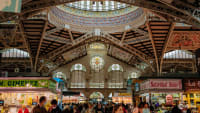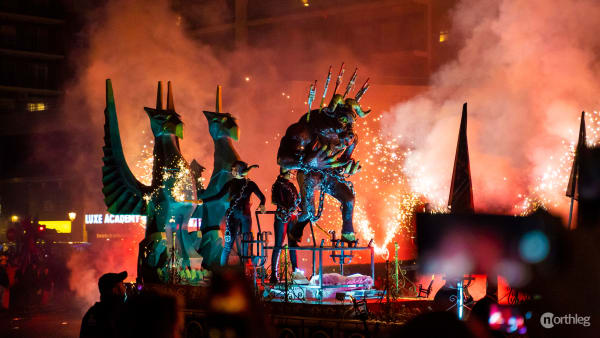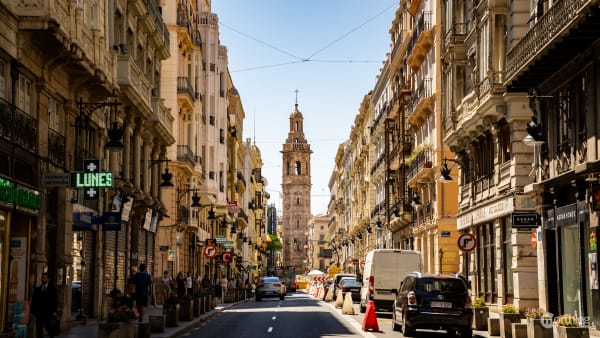Nearby places of interest
Nearby places of interest
Being in the very heart of the Old Town, the Lonja is rather close to many of Valencia’s landmarks and important buildings.
Valencia’s Central Market is Europe’s biggest fresh produce market and one of the city’s most important modernist buildings. A building that embodies and encapsulates Valencia’s craftsmanship, agricultural heritage and artistic traditions.
The Central Market is just in front of the Lonja. The entrances to the two buildings are only 60 m away (1-minute walk, less than 200 feet) from each other.
If you would like to know more about this building, you can check out our article about the Central Market.
The Real Parroquia de los Santos Juanes, known also as Iglesia de San Juan del Mercado (Església de Sant Joan del Mercat, in Valencian) is a church that carries the weight of the centuries on its shoulders.
The building has undergone several reconstructions and changes over the years. The site used to be a mosque before the Reconquista. After its demolition, in 1240 a church was built in its place. It was later reconstructed in the 14th and 16th centuries due to fire damage. Its baroque style elements date back to the late 17th - early 18th centuries, with external reforms begun in 1700.
The Santos Juanes church is right in front of the Lonja. The entrances to the two buildings are only 70 m (230 feet) away (1-minute walk) from each other.
If you want to learn more about this church, you can take a look at our article about the Iglesia de los Santos Juanes.
Built on an ancient Roman temple, later a mosque, and now a gothic church, theCathedral of Valencia is one of the most important buildings in the city. The Cathedral, also called la Seu in Valencian, holds immense cultural and historical value because of its elements dating back to different eras and styles, as well as the art pieces held in the Cathedral Museum.
The Cathedral’s bell tower, the Miguelete, offers a spectacular panoramic view of the city to those willing to climb its 207 steps.
The Cathedral is only 400 m north-east of the Lonja (5-minute walk, 0.2 miles).
If you would like to know more about this building, you can check out our article about the Cathedral of Valencia.
Plaça de la Mare de Déu, also known as Plaza de la Virgen, is one of the most emblematic squares of the city. It is located in the heart of the city’s old quarters, where the Roman Forum once stood. On most days, you can find locals relaxing on the stone benches of the square, having a drink and enjoying the gurgling sound of the fountain waters and the view of the monuments.
The most important of these is the Basílica de la Mare de Déu dels Desemparats, which is joined to the Catedral de Valencia behind it by a private passageway above an arch.
The Plaça is only 500 m away from the Lonja de la Seda (6-minute walk), just behind the Cathedral.
If you would like to know more about this square, you can check out our article about the Plaça de la Mare de Déu.
The Torres de Quart (Quart towers) are an example of Gothic military construction in Valencia. These towers, together with the Serranos towers, are all we have left of the city’s old defence wall.
This construction played a key role in stopping Napoleon’s troops in 1808, and it still bears the scars left by their cannonballs.
The Quart towers are only 550 m west of the Lonja de la Seda (7-minute walk).
If you want to know more about this defence gate, you can read our article about the Quart towers.
Plaza del Ayuntamiento or Plaça de l’Ajuntament in Valencian, is the City Hall square in Valencia. As such, it is one of the most important and central squares of the city. Every day, locals can be found relaxing by its fountain and enjoying the view of its flower market.
The Plaça is only 550 m away south of the Lonja de la Seda (7-minute walk).
If you want to know more about the City Hall square, you can check out our article about Plaza del Ayuntamiento.



















